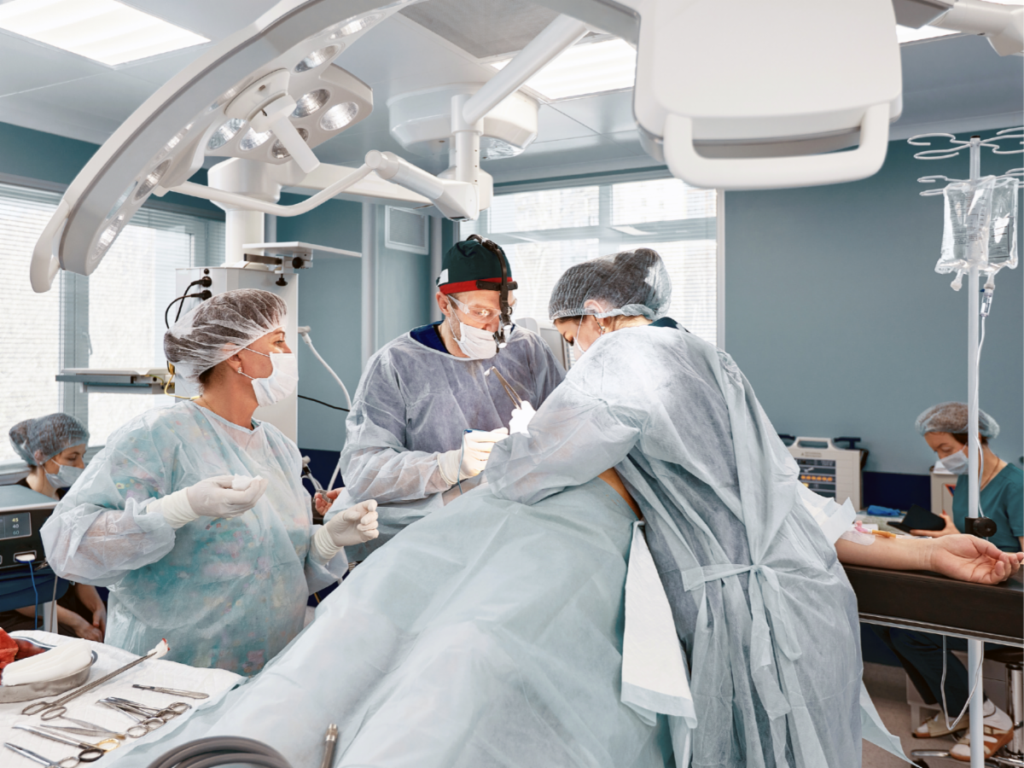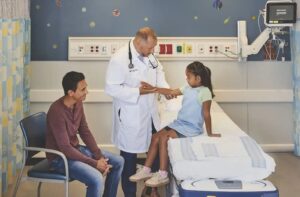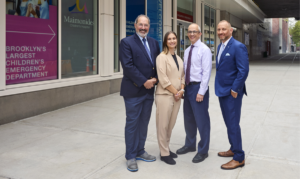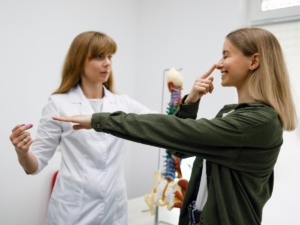Breast reinnervation procedures now available at Maimonides Breast Center offer patients undergoing mastectomy the possibility of restored breast sensation post-surgery and further enhance Maimonides’ reputation as Brooklyn’s only accredited comprehensive breast center.
“Really, this is life-changing because previously, we’ve reconstructed the breast for appearance only,” says plastic surgeon Nima Patel, MD. “Now, it’s not only about how patients look—it’s about potentially helping them feel more like their former selves. It helps some of our patients feel a little more whole again.”
Research shows up to 60% of women who have breast cancer surgery report feeling pain and/or numbness following their operation1. For many, the loss of sensation that comes with mastectomy and breast reconstruction is both unexpected and troubling. It’s an ongoing reminder of their diagnosis and what they’ve been through. And it can hinder their ability to move forward.
Reinnervation may change that. It uses the patient’s nerves or, when necessary, a commercial allograft. It was first performed at Maimonides last year by Lloyd Gayle, MD, chief of plastic surgery, and is now routinely offered to patients who qualify.
Evolving Nerve Grafting Techniques in Breast Reconstruction
Nerve grafting in general is not new; there’s a well-established history of repairing certain nerves in other areas of the body to improve feeling and functional recovery. Nerve grafting within breast reconstruction surgery, however, is a newly developing practice.
“The traditional approach for providing sensation to another area meant that we would have to sacrifice a nerve from someplace else in the body,” says Dr. Gayle. “Often, we’d go to the lower extremity to harvest the saphenous or sural nerve. With that transfer came numbness in the lateral aspect of the foot to restore sensation to another location, whichwould also scar the extremity.
“Now, we can take a product off the shelf and use it as a viable nerve graft to basically splice that nerve into the defect created when you perform the mastectomy. So, no donor site, no additional scar, and no secondary numbness in the foot or elsewhere from harvesting the nerve.”
Coordinated Surgical Approach
During routine mastectomies, surgeons typically cut branches of the intercostal nerves that provide sensation. Reinnervation requires that the breast surgeon and plastic surgeon work in tandem.
“In this case, when the breast surgeon removes the breast, they are careful to save some of the nerves,” says Dr. Patel. “Then the plastic surgery team goes in. Before they start the reconstruction, they dissect out the saved nerves. If a nerve is long enough and the surgeon can stitch it directly to the nipple, they will. If it’s not, they use an allograft.”
Surgeons can perform the procedure with autologous and implant-based reconstruction. Recovery for patients is about the same as it would be if they had a mastectomy alone, according to Dr. Patel.
Nerves typically regenerate at about 1 millimeter per day, and there are recommended sensory retraining exercises for patients to promote optimal outcomes. However, results are not guaranteed. If sensation returns, it’s unlikely to be exactly as it was before surgery, but many patients note significant improvement.
Eligibility and Clinical Considerations
There are several criteria for selecting appropriate patients. First, they have to be a candidate for nipple-preservingmastectomy. Second, surgeons will confirm that patients have a desire to preserve nipple sensation using surgical methods.
While it’s common for patients to want breast reconstruction after a mastectomy, many are not concerned about keeping physical sensation. According to Dr. Gayle, maintaining nipple sensation post-mastectomy is a priority for about one-third of patients.
A third key factor is the patient’s age. Typically, after age 70, the procedure is far less effective than at younger ages because nerve regeneration occurs at a much slower rate.
Building the Evidence Through Research
When breast reinnervation is appropriate for patients and they desire the procedure, Maimonides is one of a select number of breast centers that can perform it.
“There is a learning curve,” says Dr. Patel. Expertise in breast reconstruction and microsurgery is essential, and Drs. Patel and Gayle have both.
At this point, patients have positive anecdotal reports about the procedure, but long-term results are unknown, since the procedure is new and results take time to become apparent. Doctors are developing an Institutional Review Board-approved study to quantitatively and qualitatively assess the degree of sensory return in patients undergoing breast reinnervation at Maimonides.
In the meantime, the belief that sensation may return is proving to be uplifting for patients when they’re planning treatment and facing numerous challenges. After their mastectomy and reconstruction, the anticipation of sensation returning may have a positive emotional impact, according to Dr. Gayle.
Reinnervation is yet another example of Maimonides’ efforts to provide leading-edge care for the people it cares for.
“It’s a very good adjunct to the many treatments and techniques we offer patients at the Breast Center,” says Dr. Gayle. “It all goes to providing the best service that we can to the patients we care for here in Brooklyn.”
For more information or to refer a patient, visit Maimonides Breast Center or call 718-765-2550.
References
1. Lindau ST, Pinkerton EA, Abramsohn EM, Fuller CM, Grubb D, Mendoza T, Siston AK. Importance of Breast Sensation After Mastectomy: Evidence from Three Sources. Womens Health Rep (New Rochelle). 2023 Dec 4;4(1):594-602. doi: 10.1089/whr.2023.0106. PMID: 38099078; PMCID: PMC10719638.




